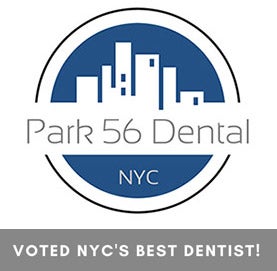How Dental Sealants Help Your Teeth
While regular brushing and flossing are basic practices for maintaining healthy teeth and gums, they are often not enough to prevent decay, especially in the hard-to-reach areas of the mouth. This is where dental sealants come into play. Sealants are an effective preventive measure designed to protect teeth from decay and cavities. They act as a barrier, shielding the enamel from harmful bacteria and food particles that can lead to dental issues. In this article, we will explore the role of sealants in oral health, their application process, benefits, and how they can be an essential component of a comprehensive dental care routine. Understanding the importance of sealants can help individuals make informed decisions about their oral health and take proactive steps to prevent dental problems before they start.
What are Dental Sealants?
Dental sealants are thin, protective coatings applied to the chewing surfaces of the back teeth, primarily the molars and premolars, where decay most often occurs. Made from materials such as resin-based composites or glass ionomer, sealants effectively seal the deep grooves and pits that are difficult to clean with regular brushing. The application process is straightforward and painless: the dentist first cleans and dries the tooth, then applies an acidic gel to roughen the surface, which helps the sealant bond to the tooth. After a few seconds, the gel is rinsed off, and the tooth is dried again before the sealant is painted on. A special curing light is often used to harden the sealant quickly.
How Sealants Work
Dental sealants work by forming a protective layer over the enamel of the teeth, particularly on the chewing surfaces of the back teeth where decay is most likely to occur. The deep grooves and pits on these surfaces are prime locations for food particles and bacteria to get trapped, making them difficult to clean effectively with regular brushing. When a sealant is applied, it fills in these grooves and pits, creating a smooth surface that is much easier to keep clean. This barrier prevents bacteria and food particles from settling in and causing decay. Unlike other preventive measures such as fluoride treatments, which strengthen the enamel to resist decay, sealants act as a physical barrier.
Benefits of Dental Sealants
The benefits of dental sealants are substantial, particularly in their effectiveness at preventing tooth decay. Numerous studies and statistics highlight that sealants can reduce the risk of decay in molars by nearly 80%, making them one of the most effective preventive measures available. The application of sealants provides long-term benefits for oral health, as they minimize the need for more invasive and costly dental procedures such as fillings, crowns, or root canals.
Who Should Get Sealants?
Dental sealants are most beneficial for children and teenagers, as their newly erupted permanent molars are particularly susceptible to cavities. The American Dental Association recommends that children get sealants on their permanent molars as soon as these teeth come in, which is typically around ages 6 and 12. However, sealants are not exclusively for children; adults can also benefit from them, especially those who do not have cavities or fillings in their molars. Individuals with specific dental conditions, such as deep grooves and pits in their teeth or a history of frequent cavities, may also be good candidates for sealants.
Potential Risks and Considerations
While dental sealants are generally safe and effective, there are a few potential risks and considerations to keep in mind. Some patients may experience allergic reactions to the materials used in sealants, although this is rare. Additionally, although sealants provide a durable protective barrier, they are not permanent and may wear down over time, necessitating reapplication every few years. Factors such as chewing habits, teeth grinding, and overall oral hygiene can affect the longevity of sealants. Furthermore, while sealants are highly effective in preventing decay on the chewing surfaces of the back teeth, they do not protect the areas between the teeth or the gum line, so regular brushing, flossing, and dental check-ups remain crucial. It is also important to address the concern about sealants containing bisphenol A (BPA). Research indicates that the amount of BPA in sealants is minimal and poses no significant health risk, but patients with concerns should discuss alternative materials with their dentist.
Myths and Misconceptions About Sealants
Despite their proven effectiveness, several myths and misconceptions about dental sealants persist. One common myth is that sealants are unnecessary if a person practices good oral hygiene. While brushing and flossing are essential for preventing cavities, they often miss the deep grooves and pits in the back teeth where decay is most likely to occur. Sealants provide an additional layer of protection in these hard-to-reach areas. Another misconception is that sealants are unsafe due to the presence of bisphenol A (BPA). Although some sealants contain trace amounts of BPA, extensive research has shown that the levels are so low that they pose no significant health risk. In fact, the exposure to BPA from sealants is much lower than what people encounter through everyday items such as food containers and receipts. Some also believe that sealants are only for children, but adults with cavity-prone teeth can benefit from them as well. There is also a misconception that sealants can cause more harm than good by trapping bacteria under the sealant. However, studies have demonstrated that sealants do not trap bacteria; instead, they cut off the bacteria’s food supply, thereby stopping the decay process.
Sealants vs. Other Preventive Measures
Dental sealants stand out among other preventive measures due to their unique approach to preventing tooth decay. Unlike fluoride treatments, which strengthen the enamel and make it more resistant to acid attacks from bacteria, sealants provide a physical barrier that protects the teeth from decay-causing agents. This barrier is particularly effective in the deep grooves and pits of molars, areas that are difficult to clean thoroughly with regular brushing and flossing. Comparatively, fluoride treatments are essential for overall enamel health and work best when combined with other preventive strategies like sealants. Regular brushing and flossing are practices that help remove plaque and food particles from the tooth surfaces and between teeth. However, even with meticulous oral hygiene, the complex surfaces of molars can still harbor bacteria, which is where sealants offer an additional layer of protection. Sealants complement these routine practices by targeting the specific areas most prone to decay. Another preventive measure is professional dental cleanings, which help remove tartar and plaque buildup but do not provide the long-term protection that sealants do. When used together, these measures create a comprehensive oral health strategy, maximizing protection against tooth decay and promoting overall dental health.
Conclusion
Dental sealants are a tool in the fight against tooth decay, providing a simple yet effective solution for protecting teeth from cavities. By forming a protective barrier over the vulnerable chewing surfaces of the molars, sealants prevent food particles and bacteria from causing decay, thereby reducing the risk of more serious dental issues. The application is quick, painless, and cost-effective, making sealants an accessible option for both children and adults. While they are particularly beneficial for children, who are more prone to cavities, adults with certain dental conditions can also greatly benefit from sealants. Despite some misconceptions, the safety and effectiveness of sealants are well-supported by scientific research.
RECENT POSTS
categories
- Uncategorized
- Cosmetic Dentistry
- Veneers
- Healthier Teeth
- Teeth Whitening
- Dental Health
- Video
- Dental Emergencies
- Invisalign
- Dental Implants
- Root Canal
- Sedation Dentistry
- Infographic
- Dental Crowns and Bridges
- Dental Anxiety
- Gum Disease
- COVID-19
- Bad Breath
- New York Dentist
- Cut out sugar
- General Dentistry
- Oral Health
- Oral Cancer
- Dry Mouth
- Gum Health
- Toothache
- Dental Sealants
- Cavities
